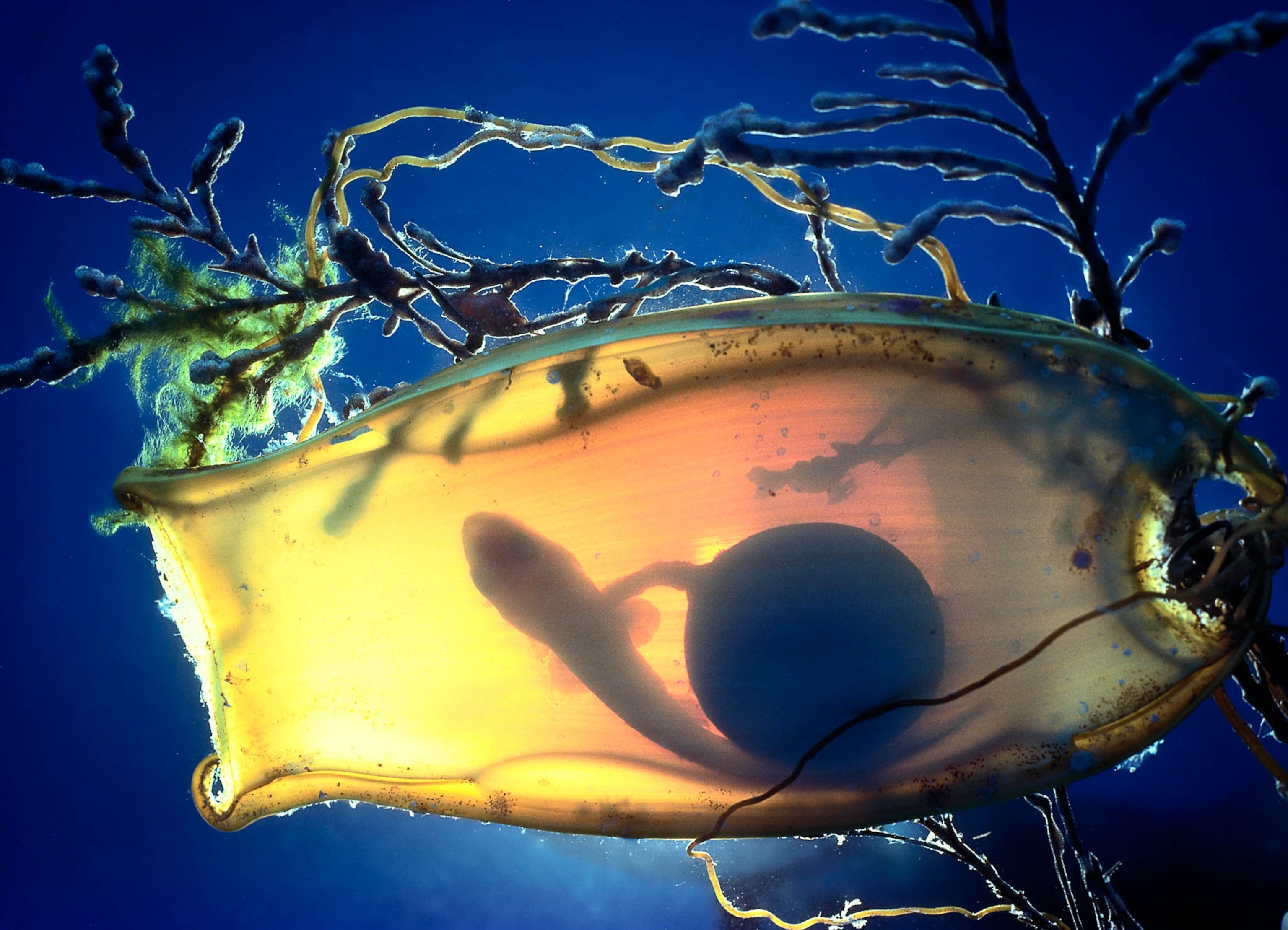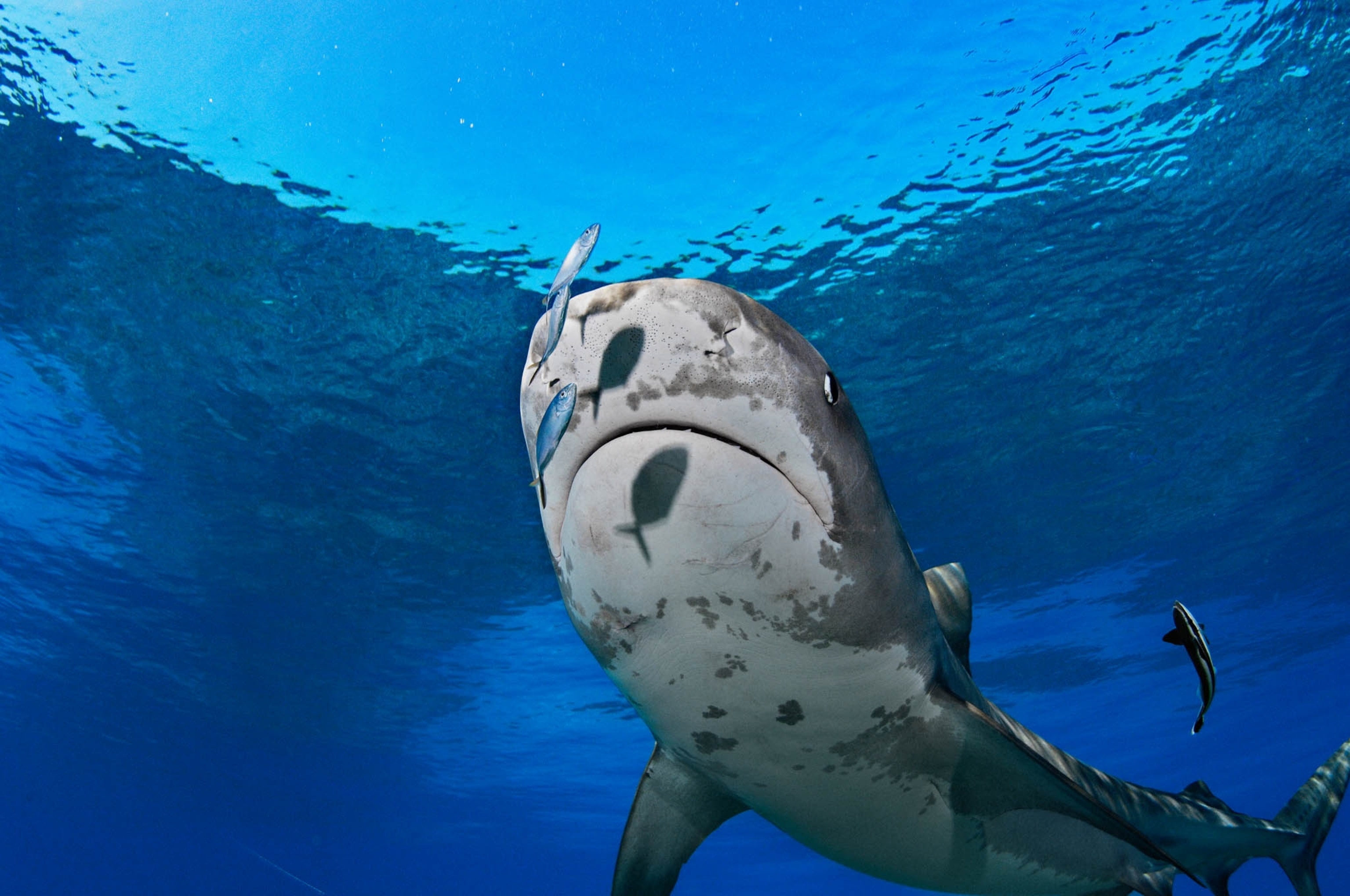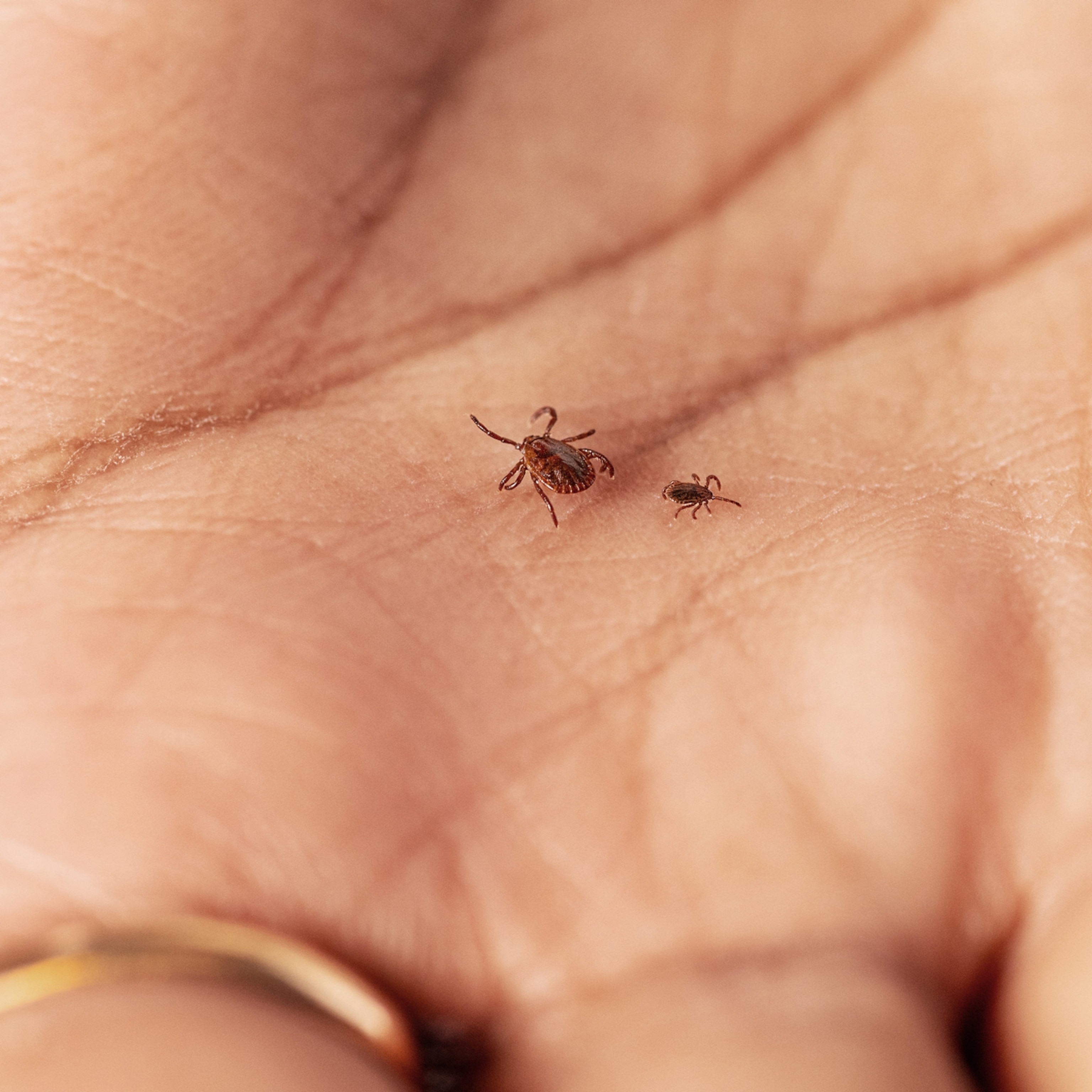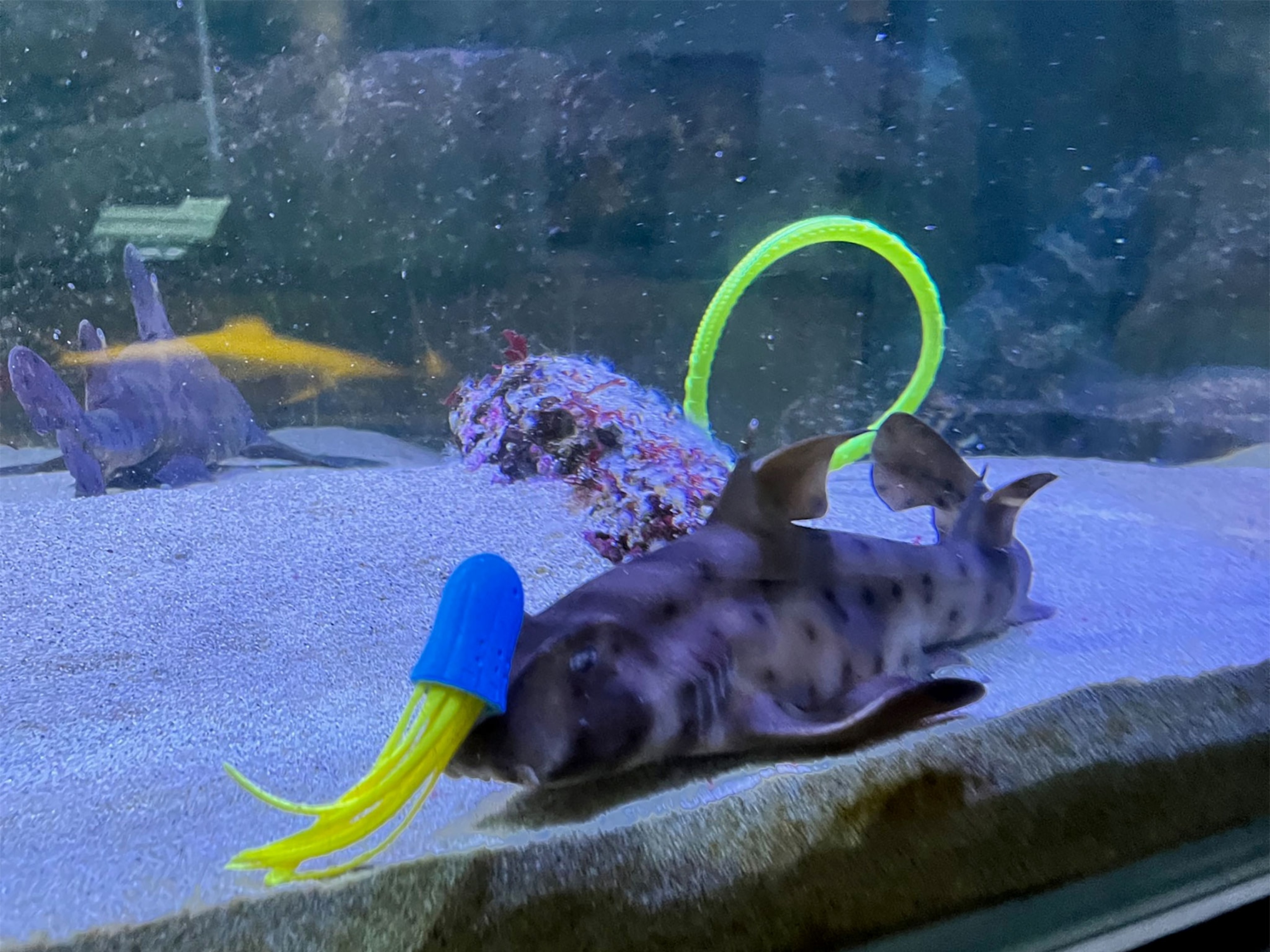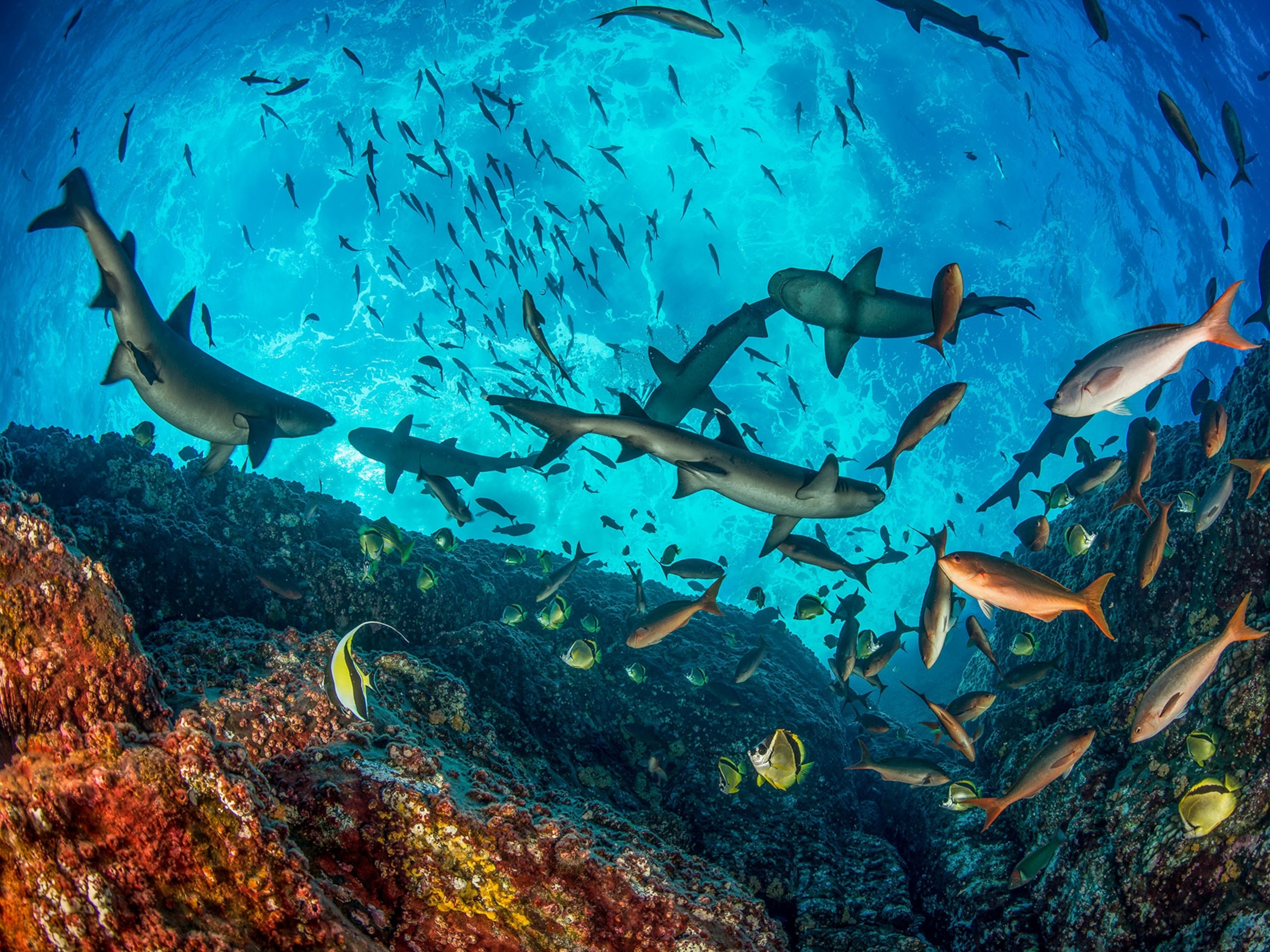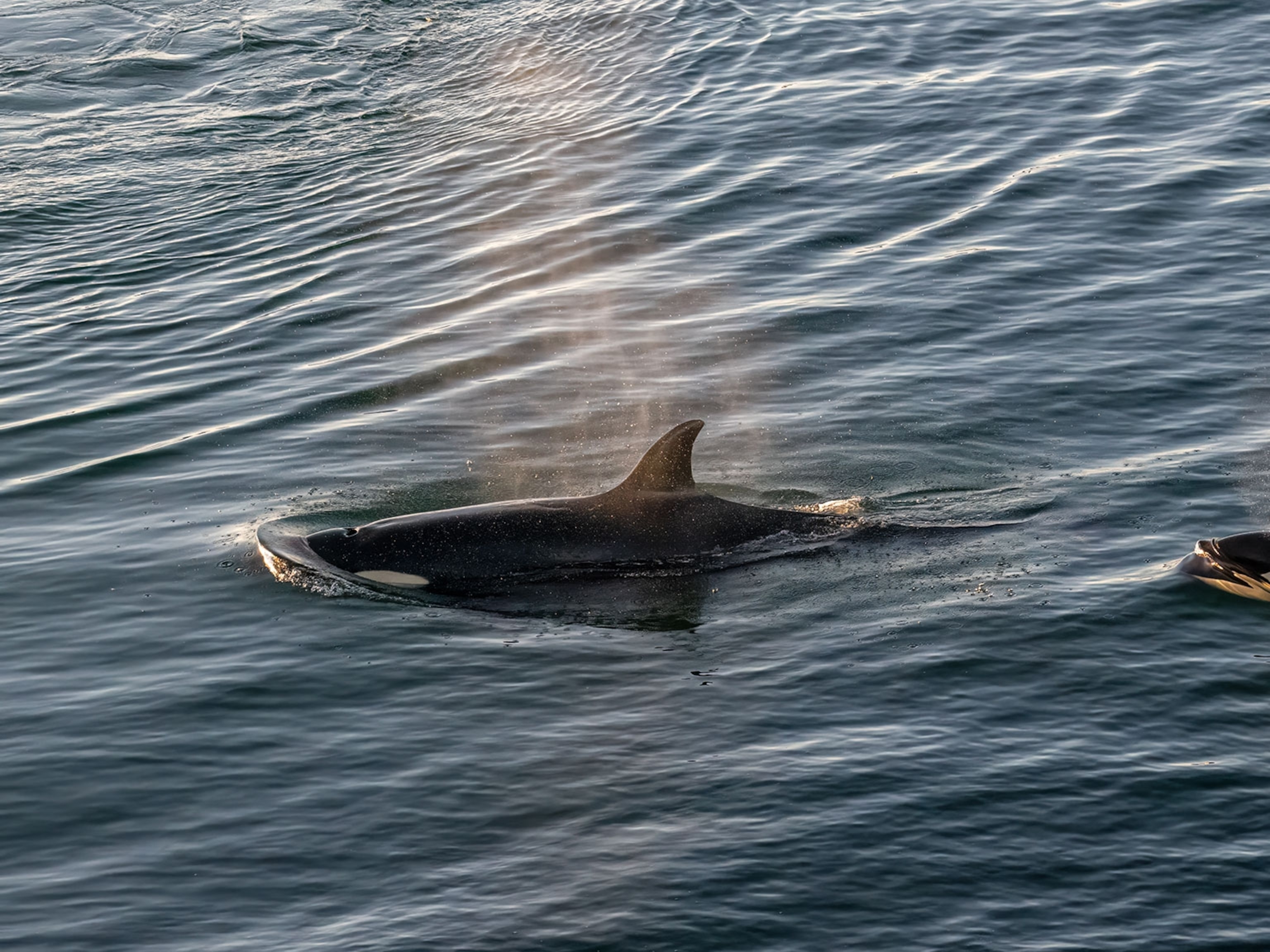Mysterious Brain-Eating Shark Killer Identified, Though Questions Remain
California's San Francisco Bay has seen repeated strandings of sharks and rays over the past several months. But what's the ultimate cause?
A California Fish and Wildlife pathologist has identified the microbial pathogen he thinks is responsible for killing thousands of sharks and rays in the San Francisco Bay between February and July.
Leopard sharks and bat rays started washing up on beaches around the central part of the Bay in the early spring. By April stranded or disoriented sharks were dying by the dozen. Most of the affected fish probably died and sank without being seen, but based on the number of strandings CDFW senior fish pathologist Mark Okihiro estimates the toll at more than 1,000 leopard sharks, 200-500 bat rays, hundreds of striped bass, and dozens of smoothhound sharks, halibut, thornback rays, and guitarfish.
Early in the spring, volunteers with the Pelagic Shark Research Foundation, a conservation group based in Santa Cruz, CA, collected several stranded sharks and mailed them to Okihiro, who works in Southern California as a white seabass hatchery inspector. Okihiro cut the sharks open and found lesions all around the sharks’ brains.
Something was entering the sharks’ noses, climbing into their brains, and eating away, causing the sharks to become disoriented and ultimately strand or die. But the cause remained elusive until Okihiro extracted cerebrospinal fluid from several sharks and sent the vials to the lab of Joseph Derisi, an expert on the genetics of infectious diseases at the University of California, San Francisco. (Learn about rare shark virgin births.)
Hanna Retallack, an MD-PhD graduate student in Derisi’s lab, generally focuses her research on the ways the Zika virus affects the human brain. But she said the lab has plenty of practice examining the genetic information in cerebrospinal fluid, and they’re well-equipped to apply their techniques on behalf of ecologists when they can. Recently, she said, they investigated a frog die-off and a rabbit with an unusual tumor.
“We do have snakes in our freezer, and birds,” she said. “Maybe a polar bear.”
Retallack took Okihiro’s leopard shark samples and used a technique called next-generation sequencing to look at all the DNA and RNA in the fluid, to see where it had come from. While 99 percent of the genetic material present was “shark,” she was able to extract and analyze the other one percent. Among the leftovers one sequence of RNA stood out.
Retallack noted the sequence, compared it against all known sequences in a database at the National Center for Biotechnology Information, and found a match: a well-known fish-killing parasite called Miamiensis avidus.
“I’m very confident that in these animals there’s Miamiensis avidus,” Retallack said. “We have a very good species-level identification at the molecular level. The RNA we see in there is quite specific to this species.”
Profile of a Killer
Miamiensis avidus is a ciliate protozoan that has been tied to a number of deaths in hatchery or farmed fish, especially in olive flounder in Japan and South Korea. Infected fish show many of the same symptoms Okihiro saw in stranded San Francisco Bay sharks, including hemorrhages and ulcers. According to a statement prepared by Okihiro in July, it’s also responsible for outbreaks at white seabass hatcheries in Southern California, including a 2010 outbreak in which 250,000 fish died or were euthanized.
Okihiro had provided Retallack with seven samples total: five sharks that died in the San Francisco Bay, and two that died elsewhere in the same months. Retallack found Miamiensis avidus RNA in all five San Francisco Bay sharks and not in the other two.
Provided a suspect, Retallack and a high school intern named Elliott Britton used a more traditional genetic sequencing technique called polymerase chain reaction, or PCR, to look specifically for Miamiensis avidus DNA in samples from 13 leopard sharks, nine of which were from the Bay. They found the parasite’s DNA in all nine Bay sharks; they didn’t find it in any of four sharks that had died in gillnets outside the Bay.
Okihiro then went to look directly for Miamiensis avidus under the microscope, and he found it in a majority of the sharks he examined. “They’re right there, where all the death and destruction is going on,” he said in August.
Between the dying sharks’ behavior, the genetic evidence, and the direct observation, Okihiro said he’s very confident they’ve identified the culprit. But why and how remain much greater questions.
This appears to be the first case, Retallack said, of Miamiensis avidus infecting wild sharks. It’s noteworthy, she added, because sharks are evolutionarily quite different from the bony fish that have previously been known to suffer infections. (Learn how sharks find their way home.)
Environmental Factors?
California Department of Fish and Wildlife officials would not allow Okihiro to be interviewed for this story, but in a previous conversation he said he thinks the parasite was already living in some fish species in the San Francisco Bay, and for some reason jumped species this year to infect sharks, rays, and other fish.
Leopard sharks swim into shallow water in large numbers in the spring and summer to spawn. Crowds allow diseases to spread quickly, and record-setting rains in Northern California might also have played a role in the timing. Previous mass shark die-offs in the Bay in 2006 and 2011 also occurred in rainier-than-average winters, and some Bay Area conservation groups have suggested unusually low salinity—caused by all the extra freshwater in the normally saltier Bay—might weaken the sharks’ immune systems. Or it’s possible the rains flushed more human toxins into the Bay, and so weakened the sharks.
“Those are things that are going to be pretty difficult to pin down,” Okihiro said in August. “But at least we have a starting point now.”
Sean van Sommeran, the executive director of the Pelagic Shark Research Foundation, which collected most of the dead sharks from the beaches, said he believes the Bay’s network of tidal gates trapped sharks in brackish shallow water, further allowing parasites to bloom and spread. Most of the San Francisco Bay shoreline has been developed, and the last two major shark die-offs have been centered near two cities built over what was formerly Bay, with channels and lagoons controlled by tide gates (Redwood City and Foster City).
“Especially during the spring,” van Sommeran said. “That’s when it seems to be a big spring break and they’re just packed in there, where they get caught.”
There are no population estimates for leopard sharks in California, and they’re generally described as among the most common sharks on the West Coast. The sharks aren’t endangered or commercially important, and the only numbers the state or federal government collect are partial, voluntary catch reports from some participating fishermen. But most leopard sharks in the San Francisco Bay spend their entire lives in or near the Bay, according to a 1990 study by two federal government biologists.
Leopard sharks, like many large fish, are slow-growing and long-lived, and give birth to between a handful and a few dozen pups. But even the death of a thousand sick sharks may be a drop in the bucket relative to recreational fishing and commercial fishing bycatch. After one bust in 2006, game wardens estimated the poachers had illegally collected 25,000 juvenile sharks from the San Francisco Bay over a 12-year period and 30,000 shark pups from Southern California over 10 years.
Sharks might inspire public interest, several researchers said, but that doesn’t always translate to research funding. And the California Department of Fish and Wildlife, still reeling from one of the worst droughts in the state’s history, hasn’t been able or willing to allocate extra dollars to study the high-profile deaths of a few thousand common fish.
“Right now I think we’ll have to try and let the dust settle and see what we would like to do going forward as far as looking at the epidemiology,” Okihiro said in August. “We’ll have to wait and see.”
Eric Simons is a writer based in the San Francisco Bay region.



